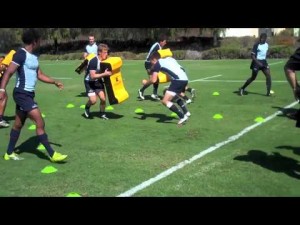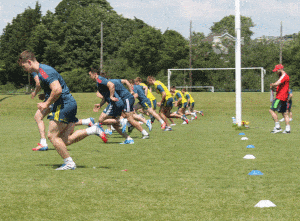My husband and I are both extremely competitive individuals, and we are both very serious about running and have been since before we even knew each other. In fact, the first time we met was at a local road race, and we have since taken several vacations simply for the opportunity to race together in an unfamiliar place. So while I was incredibly overjoyed when we learned that I was pregnant with our first son, I also wondered how I would be able to maintain the level of fitness I had worked so hard to achieve.
 Fortunately, my doctor, Dr. Raouf Farag, was able to reassure me that I would be able to continue running throughout my pregnancy and that an appropriately designed fitness program would be beneficial for a number of reasons. This was exciting news, but he also told me that I would have to make several adjustments during my pregnancy and would also need to replace some of my running with low-impact exercise. Drawing on my experience from that first pregnancy along with two others, I feel that the following tips can help any mother-to-be stay active and healthy throughout the duration of her pregnancy.
Fortunately, my doctor, Dr. Raouf Farag, was able to reassure me that I would be able to continue running throughout my pregnancy and that an appropriately designed fitness program would be beneficial for a number of reasons. This was exciting news, but he also told me that I would have to make several adjustments during my pregnancy and would also need to replace some of my running with low-impact exercise. Drawing on my experience from that first pregnancy along with two others, I feel that the following tips can help any mother-to-be stay active and healthy throughout the duration of her pregnancy.
Adjust Your Goals Appropriately
I was very fortunate that Dr. Farag took the time to get to know me well, as he recognized that my competitiveness might drive me to push myself harder than I should. In discussing my plans, he emphasized just how critical it was to adjust my fitness goals and to focus on the activity rather than on the outcome. Based on his advice, I stopped timing my runs altogether and included more and more low-impact activity as my pregnancy progressed. The doctor also indicated that regular exercise would reduce the likelihood of developing an achy back while also helping me relieve stress and fatigue.
Focus on Rest
My doctor also emphasized that it would likely take longer for me to recover from each bout of exercise during my pregnancy, so I had to be especially vigilant about rest and recovery at all times. As I began to require more and moretime to completely bounce back after a workout, I increasingly focused on low-impact exercise (I did a lot of running in the pool) and ultimately reduced the frequency of my workouts. I definitely didn’t get faster during any of my pregnancies, but I was able to return to my previous level of fitness with relative ease after the birth of each one of my kids.
Make Sure Your Doctor Is Involved and Updated
The best thing I ever did was to talk to my doctor as often as possible throughout each one of my pregnancies. I asked questions about every last detail and made sure that he was aware of everything I had planned so that he could offer his input whenever necessary. Together we made sure my fitness plan was sound and was appropriately modified according to the needs of my pregnancy.




